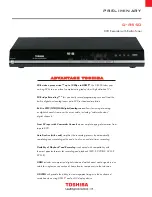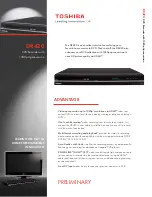
CB-1
•
6
RAMSEY "LEARN-AS-YOU-BUILD RECORDER ASSEMBLY STRATEGY"
The CB-1 voice recorder kit includes two PC boards, one being the main
board and the other a display board. They are mounted at a 90 degree angle
to each other so that the display may be easily read from the front of the kit.
It is obvious that if you were to place these boards together before mounting
all of your parts, it would make further assembly very difficult. For this reason
it is advisable to follow the step-by-step instructions in the manual and not
jump ahead.
We'll start building in one corner and work our way across, installing the
lower components up to the taller sized components. This will make our
placing and soldering of components easy. As we go along we'll attempt to
describe the circuit operation and the function of many of the parts.
Be sure to read through all of the steps, and check the boxes as you go to be
sure you didn't miss any important steps. Before you switch on the power in a
hurry to see results, check all diodes, ICs, and capacitors for proper
orientation. Also check the board for any possible solder shorts or cold solder
joints. All of these mistakes could have detrimental effects on your kit - not to
mention your ego!
Kit building tips:
Use a good soldering technique - let your soldering iron tip gently heat the
traces to which you are soldering, heating both wires and pads
simultaneously. Apply the solder on the iron and the pad when the pad is hot
enough to melt the solder. The finished joint should look like a drop of water
on paper, somewhat soaked in.
Mount all parts on the top side of the board. This is the side that has no
traces or pads on it.
IC sockets - A good practice, but not necessary in digital or low frequency
circuits. This prevents the horror of desoldering a bad or incorrectly placed
IC.
Note: Do not use a socket for U1, as this interferes with a front panel if one is
to be used.
Part orientation - All parts in the kit are mounted at 90 degree angles to each
other, meaning that all parts are either parallel or perpendicular to the board.
Part installation - when parts are installed, the part is placed flat to the board,
and the leads are bent on the backside of the board to prevent the part from
falling out before soldering. The part is then soldered securely to the board,
and the remaining lead length is then clipped off.
Summary of Contents for CB1 CHATTERBOX
Page 19: ...CB 1 19...







































